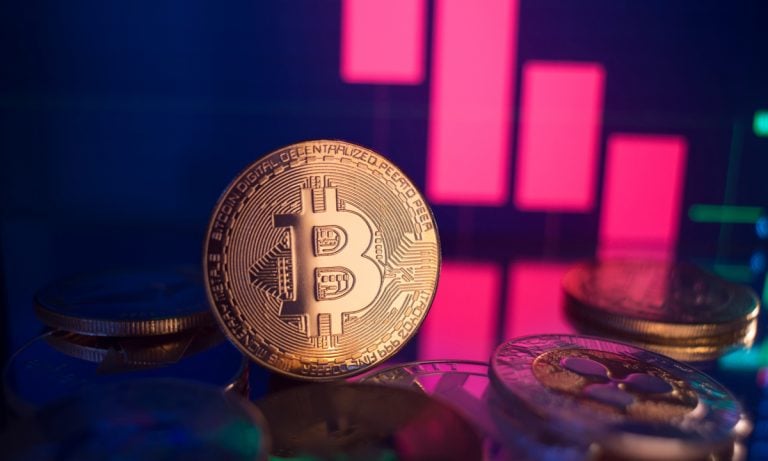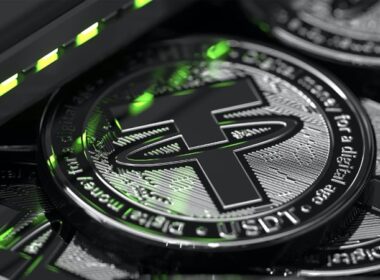On January 3, 2009 – around 18:15:05 UTC – Satoshi Nakamoto mined the first bitcoin. Which was fitting, seeing as Satoshi is to Bitcoin what Alexander Graham Bell was to the telephone. The inventor had revealed the creation to a small online community of crypto-obsessed hackers and computer scientists two months earlier. In that scene, Satoshi was already a household name – if not a real name. Years before the world heard a peep about Bitcoin, someone using the pseudonym Satoshi was posting on message boards and emailing other developers, never identifying a location, nationality or even a real name. Satoshi launched Bitcoin and saw it start to catch on, and then – in April 2011 – he sent an email to a developer friend saying, “I’ve moved on to other things.” After that? Satoshi disappeared into thin air.
In this article, we will discuss:
What Satoshi said about Bitcoin
The question of the real identity of Bitcoin's creator is one of the greatest modern mysteries. Who was Satoshi Nakamoto? Why this name? And where did Satoshi go? In addition to having invented an entirely new type of money that has reached a market capitalization of over $1 trillion, Satoshi is believed to hold over a million bitcoins, which would be worth tens of billions of dollars as of March 2021.
(Note: in some of the parts of Bitcoin's history at the beginning of this story, we referred to Satoshi as “he” or “he” because the people Satoshi was communicating with at the time assumed that the creator of Bitcoin was a young man. of course Satoshi's genre is one of the unknowns. Another is whether the inventor of Bitcoin worked alone; some experts suspect that Satoshi is actually a group of developers.)
If Satoshi left clues, they can be found in the code and messages that the crypto inventor wrote between 2008 and 2011. The entire production, with only a few hundred messages in total that consist mainly of posts on a forum he created called BitcoinTalk in 2009, it was meticulously cataloged as a sacred text. At this point, millions of people have pored over Satoshi's words, but when they were first written, they were read mainly by a few dozen hermetic members of the Cryptography Mailing List - formed by programmers specializing in inventing techniques for secure communication. Many on the mailing list identified as “cypherpunks”, who advocated the use of cryptography to bring about social and political changes.
On his own, Satoshi began coding the first version of Bitcoin in the C++ programming language sometime in the spring of 2007. In 2008, he shared his idea with two fellow cryptographers who launched the proto-cryptocurrencies b-money and Hashcash . Soon afterward, he shared his idea more widely through the Encryption Mailing List.
Bitcoin was initially greeted with a collective yawn. "When Satoshi announced Bitcoin on the crypto mailing list, he had a skeptical reception at best," recalled the legendary cryptographer Hal Finney, the first person to receive bitcoin from Satoshi. “Cryptographers have seen many great schemes from clueless novices. They tend to have an automatic reaction. "
Satoshi's announcement in October 2008 - a white paper describing the mechanics of Bitcoin - did not have the bombastic tone you would expect from someone who understood that he was about to change the world. "I have been working on a new ATM system entirely point-to-point, without trusted third parties," Satoshi wrote matter-of-factly.
But the nine-page, full of equation treatise did introduce a solution to a complicated problem that had plagued the cypherpunk community for years. No previous concept of digital money had deciphered what Satoshi called “the problem of double spending”.
How can you prevent a physical coin from being duplicated like any other computer file and spent indefinitely - in the same way that children shared endless copies of Eminem's mp3s via Napster in the early 2000s?
We propose a solution to the problem of double spending using a point-to-point network, Satoshi wrote.
A peer-to-peer system would eliminate the need for any type of central authority (such as a credit card company or bank) to validate transactions. The need for central authorities, Satoshi reasoned, was the point of failure for previous attempts at digital currencies. "Many people automatically dismiss e-currency as a lost cause because of all the companies that went bankrupt since the 1990s," he wrote. “I hope it is obvious that it was only the centrally controlled nature of these systems that condemned them. I think this is the first time that we are a decentralized system and not based on trust. "
To carry out this system “without confidence”, Satoshi proposed a publicly available shared ledger that would document all transactions. He called him " blockchain ".
Bitcoin's independence from the existing financial system was an idea that must have been particularly attractive at the time, as Satoshi had just witnessed the meltdown of the global financial system because of irresponsible bets made by major investment banks.
"The root of the problem with conventional currency is all the confidence needed to make it work," noted Satoshi. "Banks must be trusted to keep our money and transfer it electronically, but they lend it in waves of credit bubbles with only a fraction of the reserve."
In the “trust-based model” of Internet commerce, third parties, as payment processors, earn rewards for acting as intermediaries. Bitcoin can make intermediaries obsolete. And in 2010, the idea attracted considerable attention outside the island crypto scene.
In December of that year, a PC World article suggested that Bitcoin could be a tool that Wikileaks could use to avoid government interference. Satoshi reacted with unusual emotion. "It would be nice to receive that attention in any other context," he noted on the Bitcoin forum. "WikiLeaks kicked the hornet's nest and the swarm is coming towards us."
Following the trail of bread crumbs
Journalists, hackers and intelligence agencies have examined the bread crumbs that Satoshi left behind in hopes of guessing the identity of the Bitcoin inventor. Although Satoshi never shared personal details in his communications, he once described himself (in a profile on a peer-to-peer forum) as a 37-year-old man who lives in Japan - a fact that virtually no one believes. So, where was he really from?
Satoshi left a potential Easter egg in the Genesis block metadata - the first bitcoin ever extracted: "The Times 03 / Jan / 2009 Chancellor on the verge of the second bank bailout". The text comes from a Times of London headline from that day. Satoshi also made liberal use of Britons like "favor", "mathematics", "flat" (for his apartment) and the phrase "very difficult". All of this would point to the inventor as coming from or residing in the UK - unless Satoshi had been inventing false leads since the early days when he conceived Bitcoin.
The researchers, poring over the timestamps of Satoshi's various online activities, narrowed the likely time zones of the creator of Bitcoin to the United Kingdom (GMT), Eastern USA (EST) or U.S. Pacific (PST).
There are those who are convinced that Satoshi is not really a person, but a team of programmers, perhaps even someone who works within the NSA. “He is a world-class programmer, with a deep knowledge of the C ++ programming language,” Dan Kaminsky, one of the world's leading Internet security researchers, told The New Yorker in 2011. “He understands economics, cryptography and peer to peer network. "
Kaminsky's conclusion? "Either there is a team of people who worked on it or this guy is a genius."
Unmasking Satoshi
If Satoshi is really just one person, he belongs to a very specialized group of programmers that is likely to number in the tens. Assumptions about his identity abounded. Some were ridiculous. In 2014, Newsweek announced with great fanfare that the magazine located the creator of Bitcoin in Southern California - in the form of a 64-year-old retired physicist named Dorian Satoshi Nakamoto. Judging by his genuine perplexity in learning about his supposed creation, this Nakamoto clearly had only one similar name. (Satoshi, or someone who has his login information, reappeared on the Bitcoin forum in 2014 to declare: "I am not Dorian Nakamoto.")
Naturally, a wide variety of characters claimed to be Satoshi. There is Jörg Molt, a former German DJ with the hair of a Las Vegas magician who marketed himself as a “Bitcoin co-founder” to sell, among other things, a Bitcoin brand sparkling wine. And Australian Craig Steven Wright, who, according to a 2019 Wired article, "either ... invented bitcoin or is a brilliant fraudster who very much wants us to believe he did it."
Two of the most plausible suspects denied the connection. The first is cryptography pioneer Hal Finney (the cypherpunk who was one of the first users of Bitcoin). He died of ALS in 2014, but was adamant, even on his deathbed, that he was not Satoshi nor did he know the real identity of the Bitcoin inventor. Later in his ALS, he laboriously answered questions from a Forbes reporter through eye tracking software: “You have records of how I reacted to the Bitcoin ad and I struggled to understand it. I suppose you could reply that I was able to pretend, but I don't know what I can say about that. I made some changes to the Bitcoin code and my style is completely different from Satoshi. I program in C, which is compatible with C ++, but I don't understand the tricks that Satoshi used. "
Another prominent suspect is computer scientist and cypherpunk Nick Szabo (author of the smart contract concept that powers decentralized financial applications and creator of the 1998 Bitcoin precursor, Bit Gold), who systematically denied his involvement. A simple reason to believe him? Szabo was an active participant in the cryptography scene before, during and after Bitcoin in his own name. Why would he have created a false identity for this project?
There is also the tragic and persistent speculation that Satoshi may have been a prodigious cryptographer named Len Sassaman, who killed himself in 2011 after a long battle with depression. In fact, two months before Sassaman's suicide, in one of Satoshi's final communications, the Bitcoin inventor sent an enigmatic email to another developer saying that he "probably won't be around in the future".
Why Satoshi wishes to remain anonymous
If the real Satoshi lives and breathes, there are some compelling reasons to stay hidden. The United States government has a well-established record of prosecuting individuals bold enough to invent a competitor for the dollar. As reported by The New Yorker, the FBI has declared it “a violation of federal law for individuals. . . to create private currency or monetary systems to compete with the official currency and currency of the United States. ”In fact, federal prosecutors filed a series of charges against the founders of a startup called e-Gold in 2007, claiming that their organization did not explicitly prevent money laundering or other crimes.
Assuming the creator of Bitcoin is alive, Satoshi may be on the right track to becoming the richest human being on the planet. But there is yet another fascinating twist. As the Bitcoin blockchain is open, it is possible for researchers to plausibly identify much of the bitcoin that Satoshi extracted in the early days of his invention. Early on, when Satoshi sent some bitcoin to early testers like Finney, Satoshi's coins never seem to have been shipped, spent or capitalized in any way. Over more than a decade, as the possessions of the Bitcoin inventor grew to potentially be worth tens of billions of dollars, the portion of the money that Satoshi earned literally remained untouched - a vast hiding place from so-called “lost coins” that could be in circulation, but they are not.
So, who is Satoshi? One of the main suspects? One of the many other people who have been identified as the creators of Bitcoin over the years? Someone that no one has ever suspected? Is Satoshi alive or dead? A single inventor or a team? Over the years, it seems more and more likely that we will never know the answers.
What we have left is the creation of a trillion dollars from Satoshi, a small cache of communications and perhaps a final gift. "Lost coins just make others' coins worth a little more," wrote Satoshi, in response to a 2010 BitcoinTalk topic about users losing access to their wallets. "Think of it as a donation for everyone."










